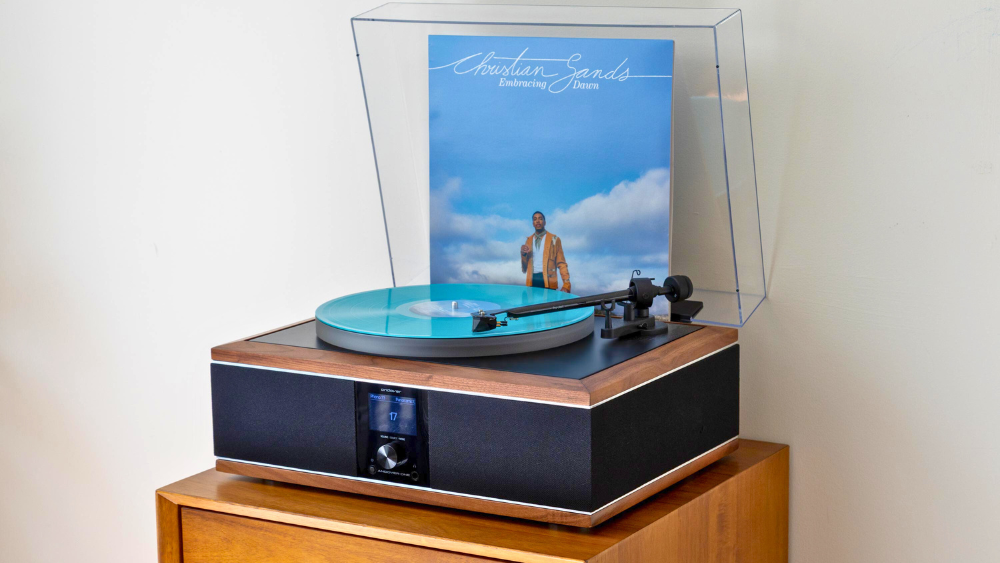What Is High-Fidelity? And Why Does It Matter?
September 08, 2025 3 min read

If you've ever shopped for audio gear, you've probably come across the term high-fidelity or “hi-fi.”
But is that just something audio brands throw around to sound impressive? Or does it actually mean something?
Spoiler: it absolutely means something.
And if you love music—or even movies, podcasts, or gaming—high-fidelity audio matters. Once you hear it, you won’t want to go back to regular big-box store speakers.
What Does High-Fidelity Actually Mean?
High-fidelity (often shortened to hi-fi) refers to the accurate and high-quality reproduction of sound, aiming to recreate the original recording as faithfully as possible. It’s all about realism—making you feel like you're in the room with the artist or at the performance.
Here’s what sets hi-fi apart:
-
Accuracy: The system doesn’t add or remove anything from the sound—it reproduces it exactly as it was recorded.
-
Wide Frequency Response: From deep bass to shimmering highs, a good hi-fi system captures it all.
-
Low Distortion: You should hear a clean sound, not fuzz, hums, or harshness.
-
Low Noise Floor: Silence should be silent—no background hiss or interference.
-
Emotional Connection: Maybe the most important factor: hi-fi audio makes you feel more. It brings the music to life.
A Modern Look at Hi-Fi: More Than Just Specs
The meaning of "hi-fi" has evolved. In the 1950s, it meant accurate audio through analog gear. In the '70s, it expanded to stereo sound. By the 2000s, hi-fi battled the rise of compressed MP3s that prioritized portability over quality.
Now in 2025, we’re in a golden age where both analog and digital formats can offer stunning fidelity. Vinyl is back, digital files are sharper than ever, and even wireless audio (via aptX HD, LDAC, and modern DACs) can deliver hi-fi experiences without cables and complexity.
The Hi-Fi Spectrum: What You Can Expect at Different Price Points
Hi-fi isn’t just for people with deep pockets. There’s a spectrum of high-fidelity sound available at every level—from starter systems to reference-grade setups.
Entry-Level Hi-Fi
Ideal for casual listeners who want better-than-basic sound.
-
What to Expect: Clear vocals, tighter bass, better separation between instruments.
-
Examples: The SpinDuo by Andover Audio
-
Big Win: Huge upgrade over Bluetooth speakers or plastic soundbars, especially for vinyl lovers.
Mid-Tier Hi-Fi
Great for music lovers ready to invest in serious sound.
-
What to Expect: More power, richer tonality, deeper bass, and improved dynamics.
-
Examples: Systems like the SpinQuartet featuring a subwoofer
-
Big Win: Balanced, room-filling sound with a cleaner signal chain, smoother highs and deeper lows.
High-End Hi-Fi
For those chasing ultimate realism and immersive audio.
-
What to Expect: Near studio-quality playback, ultra-low distortion, better imaging, and that elusive “you are there” feeling.
-
Examples: The Andover-One Record Player or Premier System
-
Big Win: Every listening session becomes an experience.
Hi-fi isn’t always about the highest price—it’s about thoughtful design, build quality, and sound engineering. Some compact, all-in-one systems deliver more fidelity than larger setups packed with budget parts.
How Do You Know If You’re Hearing Hi-Fi?
You don’t need special training to notice high-fidelity sound—you just need to listen. Here are some signs you’re experiencing hi-fi audio:
-
You hear details you never noticed before. A subtle harmony, the creak of a piano bench, the shimmer of a cymbal.
-
You feel less fatigue during long listening sessions. No harsh highs, no bloated bass.
-
You’re more emotionally engaged. The music moves you.
-
You stop multitasking and start listening. Hi-fi has a way of pulling you in.
Final Thoughts: Hi-Fi Isn’t Just for Audiophiles
High-fidelity doesn’t mean complicated. It doesn’t mean overly expensive. And it definitely doesn’t mean snobby.
At its core, hi-fi is about hearing music the way it was meant to be heard. Whether you’re listening to a jazz trio on vinyl, streaming a favorite playlist in CD-quality audio, or watching a film with rich, immersive sound—hi-fi enhances everything.
So don’t settle for lifeless sound. Once you experience high-fidelity, you’ll never want to go back.
Ready to experience hi-fi?
Explore systems that bring your music to life—beautifully designed, simple to use, and built to sound better.
